In flower growing, you can easily trace the trend towards growing very unusual and necessarily original plants along with more traditional cultures. Pretty beautiful and peculiar member of the exotic flora is unsurpassed pahizandra. The flower did a long way from Japan and China to us, and then lightningly won the hearts of flowers lovers. About how to grow Pahisandra properly, organize landing and care in open soil behind this exotom, we will also tell me further.
Pahizandra, biological description of culture
Pakhizandra - a plant from the family of self-sewing. This is a perennial, which is known as soil culture with fast-growing deep green foliage with yellow-olive glasses in the sun. In the natural growing environment, Pakhizandra is a wild-growing semi-staple, which buoyo covers the ground with its leaf carpet.
In the people, the plant is called "Japanese Rocha,". And the generally accepted name "Pakhizandra" occurred from Pachysandra and means "big male".
- In the culture, egg-shaped foliage with a catchy glossy coating. The leaves are thickly covered with stalks, forming a three-tiered location, which creates the effect of a live green carpet on Earth.
- Every three years, the greenery of the plant deviates, just notice this process is quite difficult, since the formation of new leaves is very quickly.
- Pahizandra does not differ in height - its height is 25-37 cm. The leaves are small, their diameter is 2-4 cm, length is not more than 6 cm. On one stem is formed from 6 to 10 leaves. They tightly hold on shortcakes.
- The color of the leaves can be a monophonic green color, for example, like a grade of Pakhisandri "Green Carpet" or a motley color, like a variety of "Variagrat".
- The flowering of a sophisticated pachisandra starts in mid-May, and pleases the flower water until the end of August. Break-shaped inflorescences, densely littered with pale flowers.
- An amazing feature of the plant is the ability of the same inflorescence of self-peculiar due to the simultaneous presence of female and male flowers.
- From the colors of pachisandra are formed small fruits-bonuses to 11 mm in diameter, which are enclosed in a triangular box.
- Despite early blossom, Pakhisandra seeds get very difficult. In our climatic conditions, they extremely rarely manage to completely mature.
- Pokhizandra has a well-developed and fairly large root system, mainly located above the ground.
- Pakhisandra, as it turned out, not easy exotic guest in the garden plot, but, and excellent remedy for weeds.
Pakhizandra on a favorable soil can quickly grow and aggressively capture the near garden sites. Therefore, it is important during the landing to limit the territory for its growth.
On a note! Pahizandra Terminalis (Top) is the most common view among the gardeners. It grows in any condition without care.
Phachizandra flower, species of kind
In the natural area, only 4 types of pachisandra are identified. But the work of breeders surpassed all the expectations and populations of the species of the exotic semi-stationist increased significantly.
Among the most attractive, in terms of landscape design, varieties include:
The stubby pahizandra is a large form, the growth of which is capable of reaching 48 cm. On a long shoot, 4-7 leaves are grouped mainly on top. The color of foliage is dark green. White flowers, inconspicuous, depleting a weak aroma. The famous variety is "windy rock" with the colors of the bright pink color and multiple elongated stamens.
- Japanese Pakhizandra is a dwarf hybrid, increasing no higher than 12 cm. At the variety of openwork gear leaves, which fall out every two years. Inflorescences are small, creamy-white, hidden under the green bedspread from the leaves.
- Pakhizandra lying (another name is simple) - the variety differs significantly from other hybrid forms. First, the grade annually resets the leaves. Secondly, his stalks are painted in pink-brown, and gentle flowers - in white-pink color. Well, thirdly, the leaflets of Pahazandra densely dodged with a darous cover of white.
- Phachizandra isply - popularity has provided easy care and reproduction. The view retains the hardest cover for three years, and only then it is imperceptibly updated. The period of flowering Pokhizandri the top falls for April-May. Garden forms of this species are distinguished by the wealth of beautiful varieties. Phachizandra "Silver Eyge" - a short view with gentle silver bordering on the leaves; "Variagates" - a grade with foliage, on which the white border is sewn; Pahizandra "Green" - a semi-stabbed of low growth with decorative foliage of green color.
Pahizandra, landing in open ground
The choice of a good landing place will minimize further care for Pahisandra. Therefore, at this stage you need to try a little.
When to plant a pahisandra
Planting young bushes Pahisandra is carried out from early spring until the last days of autumn. Whatever the landing time, the plant always carries out and in 40-60 days begin to actively grow. Plant plant on the northern slopes, along the tracks, as the bordering of garden steps.
Bushes are immersed in a loose soil on a small depth, watered, and if very sunny - are signed. In the mulching of the pachisandra does not need, since under its sheet covering does not survive any weed.
Location and soil for Pahisandra
The composition of the soil is not fundamental for a tropical pahisandra. But the pH indicator is presented with strict requirements. We will have to prepare soil composition with a neutral or weakly acidic reaction.
On a note! When dropping in the loose breathable land, the plant will instantly grow losses even in the conditions of nutrient deficiency.
The ideal landing section of Pakhisandra is a lace half-day, and for some varieties - a complete shading. An exception to the rules is a volatile subspecies that retain their decorativeness only with sufficient lighting of the site.
Pahizandra, garden care
Pakhizandra attracted gardeners not only with its exotic appearance, but also unpretentious in care. It does not have to pay a lot of time, because it develops well without third-party help.
Watering and feeding Pahisandra
If the bushes are planted in a half, watering is needed moderate. Even if you bring it to a minimum, evergreen bushes do not drown. Motion varieties growing at sunny areas, you need to water in hot weather 3-4 times a week.
The pichizandra does not need. It gives an excellent annual increase even on poor soils. On the contrary, the introduction of concentrated fertilizers can completely destroy the decorativeness of culture.
On a note! All varieties of Pahisandra show unprecedented resistance to various diseases and pests.
Pruning and wintering Pahisandra
The trimming of the "Japanese dairy" is needed only if the old shoots are very pulled out, they will play around the roots or stop it to go well.
Stretching the growth of young side shoots helps the tipping of the top. After that, the bush takes beautiful lush molds, and the leaves become brighter.
Pokhizandra reproduction
This soil industry is effective and easily propagated in a vegetative way by dividing rhizomes or shilling. Favorable conditions for this fall on the first spring days, when the appearance of flowers still has time.
To divide the rhizomes, it takes a bush to dig up and then carefully cut on delays with the kidneys. The subsequent landing of young bushes is carried out in a nourishing loose ground, then it is moisturized.
The drawing method involves cutting the stems. They are immediately rooted in moistage soil. The cuttings are safely rooted, and then they go into growth rapidly, developing a thick green part.
It is very rare to get the seed material of Pahisandra. If the seeds were able to high-qualityly mature, the sowing occurs in the autumn period right into the open soil to be covered. With the advent of the first spring rays, young sprouts are sprinkled.
Seeds do not have a good germination, so the pig is rare. It will take as many as three years so that the bush is well developed roots, and after it is a magnificent above-ground part. Pahisandra grown from seeds will delight blossom only four years old.
On a note! Pahizandra is experiencing severe frosts without any shelter, but young bushes in the first year it is better to cover the layer of foliage.
The role of Pahisandra in the garden decoration
Although the appearance of the tropical perennial can not be called extraordinary, but he deservedly finds his place in the garden. Many perceive Pahisandra as the soil river and try to plant it instead of grass. But it is absolutely not correct: on a green carpet from pachisandra sheets, it is strictly forbidden to walk, since the bushes grow high and easily damaged by mechanical path. But this tropical plant with success can be used for growing low and beautiful live swelling or openwork border.
Light green or motley shrub's greens is immediately striking and stands out among other representatives of the garden flora. In addition, the elegant pachizantra with its elegant form of leaves transforms the entire landscape. The culture is happy to plant close to houses, low fences, as well as about economic buildings.
The advantage of Pahisandra is that it quickly grows on the ground and does not close the buildings. At the same time, its saturated foliage benefits brick or wooden facades. And its root system never damages building structures, since it is formed in the upper soil balls.
Rights or wide areas between the garden tracks are wonderful, which denounced pahisandra. But most often the perennial can be noticed under adult trees, because it grows perfectly in complete shading conditions, where other plants can not survive. Such a peculiarity of perennial made it frequent guest of shady sites.
Pakhizandra replenishes the compositions that mimic the wild forest, but also the neighborhood with fruit trees and bushes will be a Pahisandra in joy.
With her participation you can land bright diverse flower beds. For example, on the shaded and wet portion, the Pahisandra can be combined with such low-spirited crops as host, hoofing, balquinka, jeffersonium, and cleans. Or you can make a highlight, "raised" by a pachisandra with a decorative velbeyn, blackhead, as well as with lobelia and heel. The only mistake can be the neighborhood of "Japanese dairy" with branched high perennials who quickly displace the Pahisandra from the garden.


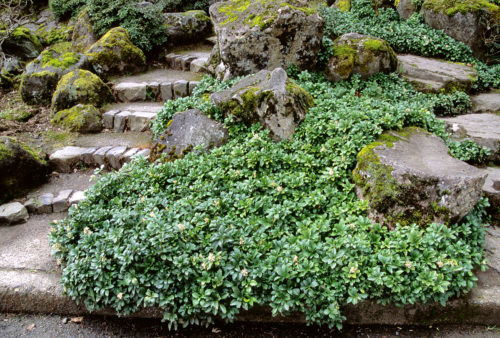
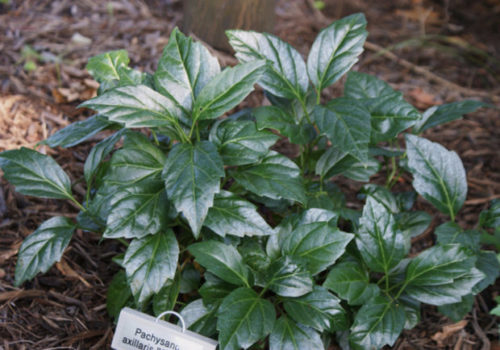
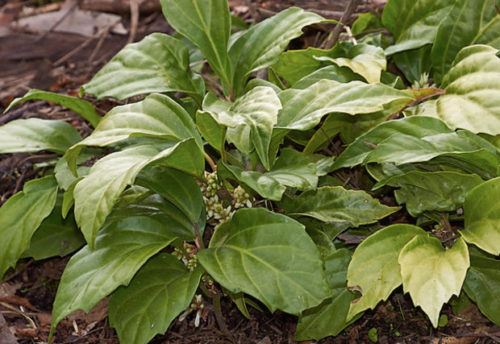
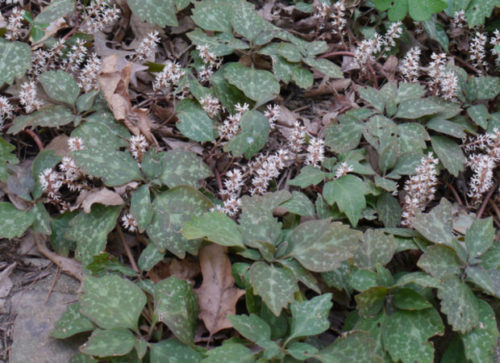
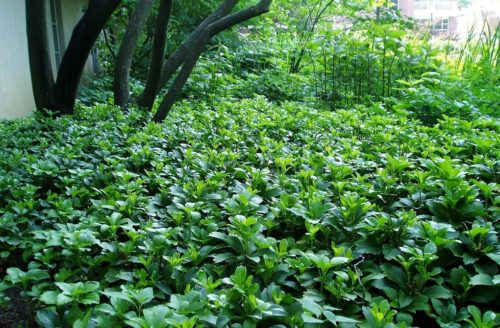
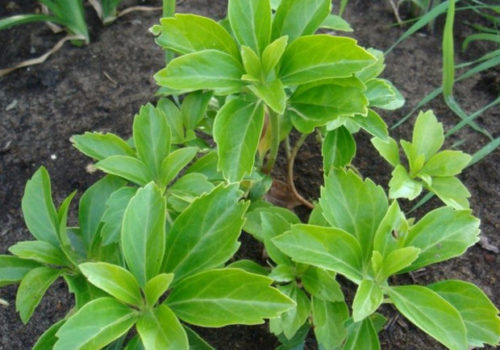
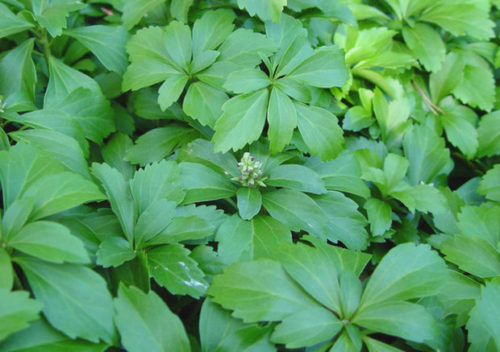
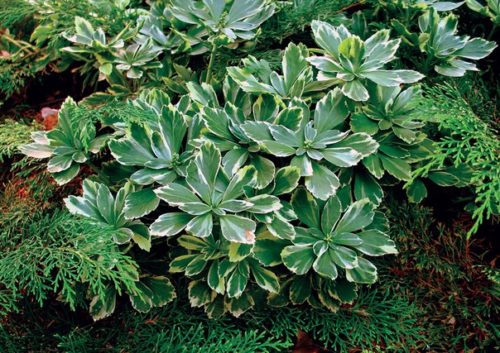
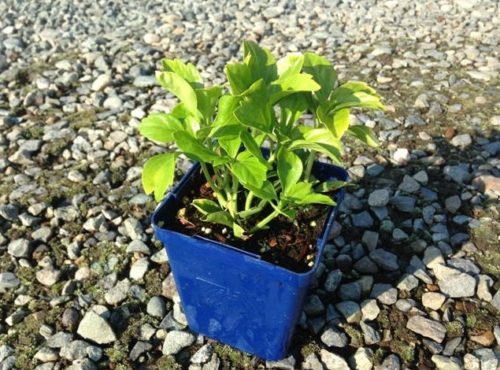
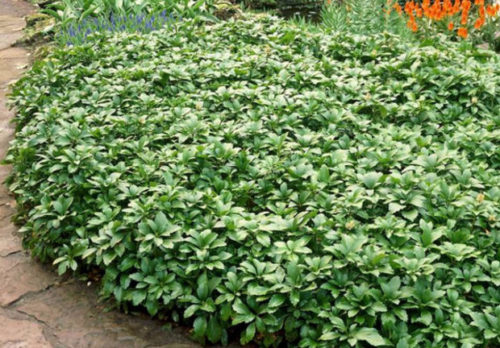
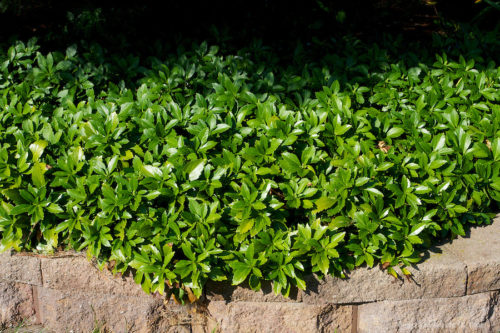
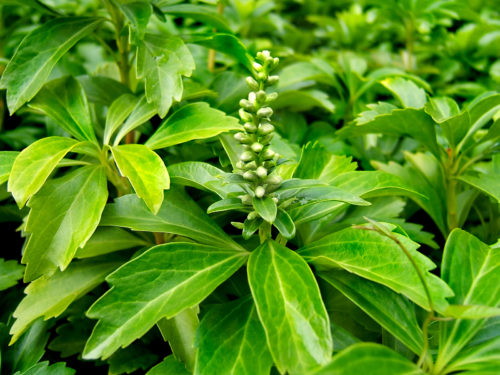












 Start a discussion ...
Start a discussion ...